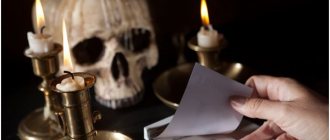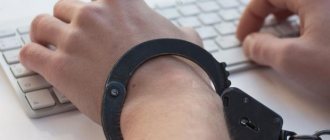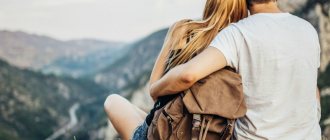What is trypophobia
Trypophobia is the fear of clusters of small holes or holes. The patient experiences irrational panic fear at the sight of cluster holes (lumps, pimples, holes on the surface). The name of the phobia comes from two Greek words: trypo - making holes and phobos - fear. This is a modern type of phobia, the first case was registered in 2000, and the term was introduced in 2004.
What frightens a trypophobe:
- corals;
- honeycomb;
- anthill;
- chicken skin;
- lotus flower (box with seeds);
- plucked bird;
- acorns in the tree;
- drummer fish jaw;
- colander;
- pumpkin seeds;
- cat tongue;
- sandstone wall;
- bubbles in dough, drinks;
- ulcers on the lips;
- snake skin;
- washcloth;
- cheese;
- porous chocolate;
- enlarged pores;
- acne and scars on the face;
- spongy structure of plants;
- holes for seeds.
Frightening objects can be divided into groups:
- accumulations of holes on the body of a person or animal;
- features of the structure and structure of plants;
- holes in food products, for example, bread, cheese;
- passages of small animals, insects, worms;
- trees, geological rocks with a porous structure;
- cluster holes on technical objects;
- images and photographs of many holes.
This is interesting! Researchers claim that 80–90% of people are prone to trypophobia, and the remaining 10–20% have mild pathology.
The mechanism of trypophobia
In its development, the fear of large or small holes goes through 4 stages:
- First. There are no visible manifestations of trypophobia. A person will react normally to a piece of porous chocolate or foam in a cup of coffee. But if you show him a cluster of many holes in rocks or, say, tubercles on the back of a frog, he will experience discomfort.
- Second. The situation is aggravated by watching pictures or horror films in which the holes are fraught with some kind of danger. They have a particularly strong effect on impressionable people.
- Third. The patient's nervous system has undergone changes. He is afraid of absolutely all holes located nearby. Even an ordinary foam sponge will confuse him and make him very nervous.
At the last, fourth, stage, trypophobia is considered a full-fledged disease that requires treatment with medications.
How does hole phobia manifest itself?
When seeing frightening objects, a person experiences horror, panic, anxiety and other discomfort. During a panic attack, the patient behaves inappropriately, he screams, waves his arms and legs, and may attack someone. In addition to psycho-emotional and behavioral reactions, somatic manifestations of fear are observed.
Physical manifestations of phobia:
- sweating;
- increased blood pressure;
- increased heart rate;
- headache;
- dizziness;
- chills;
- nausea;
- spasms;
- itching;
- skin irritation and redness;
- icing of the limbs.
During a panic attack, breathing problems, coordination problems, and a feeling of unreality of what is happening are observed.
Degrees of trypophobia
Psychologists distinguish 3 degrees of trypophobia. The first one is considered easy. When looking, for example, at a honeycomb, a person experiences discomfort. It manifests itself in itching and the desire to take a shower as quickly as possible. The heartbeat quickens, sticky sweat appears, and nervousness appears.
The second stage is the middle one. Symptoms become more pronounced. Again and again the patient remembers the horror that he experienced. He just can't forget about him. There is a fear of discomfort, a fear of experiencing unpleasant emotions again.
And finally, the severe stage of fear of small or large holes. The person sees holes everywhere. He may even faint at the sight of a porous chocolate bar, mosquito net or bread.
Causes of trypophobia
Fear of holes is one of the most poorly understood phobias. The exact reasons for its development have not yet been established, but scientists have been able to determine that hole phobia is based on the strength of associations. Holes are associated with disease, rot, decomposition, injury, danger, infection.
Another theory is that one part of the brain is responsible for the emotional response to the cluster of holes. In some people (10–20%), this department is slightly more developed, and therefore these people are at risk.
According to the third theory, we inherited the fear of holes from our distant ancestors. In primates, abscesses and wounds on the body signal that larvae have appeared under the skin. In exotic countries, people risk becoming victims of insects that use humans as an incubator. All this makes you afraid of holes at the genetic level (fear that they are dangerous, that someone lives there, etc.).
According to recent studies by American scientists, aversion to holes is based not on fear, but on disgust and disgust. Therefore, in the United States, such a diagnosis as trypophobia does not officially exist. Researchers are confident that hostility is caused by associations, and not by specific brain function or a genetic factor.
Less commonly, the phobia trypophobia is caused by personal trauma and associations. For example, a child was attacked by a swarm of bees, now any cluster of holes is associated with honeycombs, and those with danger and pain.
This is interesting! Some researchers call trypophobia not a fear or a disorder, but an unconscious reflex reaction.
What causes the fear of holes and openings?
The American Psychiatric Organization does not consider the fear of holes to be a phobia. Some researchers argue that trypophobia is not based on fear, but on biological disgust. For some people, multiple holes cause disgust and discomfort, while for other people this is not the case. Thus, scientists have come to the conclusion that the fear of holes is not a mental illness, but an unconscious reflex reaction.
Psychologist Jeff Cole discovered trypophobia in himself and began to actively study it. As a result of research, he concluded that the fear of holes is based on biological disgust, which is present to one degree or another in every person.
The fear of many small holes is caused by the fear that someone might live there and cause harm. This is a natural protective reaction of the human body. Modern man inherited this fear from his distant ancestors.
lotus seeds
A large cluster of holes usually indicates the habitat of dangerous animals or insects. In addition, spotted coloring resembling holes is present on the skin of many poisonous creatures. People used to identify danger using these signs. Modern man no longer needs this, but the ancient mechanism is firmly entrenched in the subconscious.
Phobia of holes in the body is associated with the fear of contracting some disease that can destroy the body. Seeing holes in the body of oneself or others, the patient experiences horror and panic.
For most trypophobes, fear arises as a result of negative events experienced in the past. For example, an attack by a swarm of bees can cause psychological trauma to a person, which develops into a persistent fear of multiple holes. In the mind, these holes will be associated with honeycombs, from which bees can fly out at any moment and attack.
Psychologists identify several more reasons that contribute to the appearance of trypophobia:
- genetic predisposition;
- features of upbringing;
- cultural traditions.
Triphophobia test
Anyone can arrange a trypophobia test for themselves and pass it. Just find a selection of thematic images on the Internet. If looking at them makes you feel anxious, disgusted, horrified, or feel physical discomfort, then you probably suffer from trypophobia.
In addition, you can suspect the presence of pathology by analyzing the answers to the following questions:
- Do any holes on the human body cause you to panic?
- Are you afraid of piercings, images of punctures?
- Are you afraid of getting hurt?
If you answered yes to all questions, we recommend visiting a psychologist or undergoing additional testing.
This is interesting! During professional diagnostics, the psychologist also uses the method of viewing images with small holes, small multiple holes on the human body or in other objects.
Self-treatment of trypophobia
To begin with, a person with this pathology should:
- include physical exercise in your lifestyle (exercise not only strengthens muscles but also has a positive effect on thinking);
- monitor your sleep (avoid lack of sleep, but also do not oversleep);
- stop drinking alcohol, smoking cigarettes and caffeine (as these substances often cause anxiety in a person).
Also, experts recommend starting to practice yoga or meditation. These relaxation methods will allow you to relax your entire body, free your mind from extraneous thoughts, and achieve mental peace.
Step-by-step method for self-treatment of phobias
A person should be alone and in silence.
- You need to lie down comfortably, close your eyes and think about the object that causes panic attacks. Then you should evaluate the severity of the symptoms that arose at that moment on a scale from 0 to 10.
- Next, you need to think about something beautiful that evokes only positive emotions. You can turn on some nice music. This is necessary in order to distract the brain from previous symptoms. Then you need to open your eyes, look to the sides, into the distance.
- Now you need to think about the phobia again and evaluate the severity of the symptoms from 0 to 10. If the number has decreased by at least 1 unit, then the technique is working.
These exercises should be performed 5-6 times a day, only then can you achieve good results and completely get rid of the pathology.
Trypophobia on human skin
Due to insufficient knowledge of the fear of a large number of small holes, many myths and rumors arise around it. For example, someone started a rumor that trypophobia on the body is a disease that affects a person’s skin, causes holes in the skin, abscesses, tears, and supposedly the disease destroys parts of the body. And these rumors are supported by photographs created using Photoshop. They depict and retouch individual parts of the body (holes in the human body or skin are superimposed on healthy parts) or depict body parts with wax makeup (most often on the palm).
It is important! Trypophobia is not a somatic disease; it does not affect the human body. Any physical discomfort is caused by self-hypnosis.
Symptoms of trypophobia
This pathology manifests itself in the form of an increase in anxiety and panic attacks. Trypophobia is also accompanied by:
- trembling in the body, tremors in the hands;
- tachycardia (rapid heartbeat);
- difficulty breathing (there is a feeling of lack of air);
- increased sweating;
- obsessive ideas;
- unreasonable fears;
- allergic reactions;
- nausea;
- headaches, including migraines;
- hyperemia of the skin.
How to get rid of the fear of holes
Trypophobia is treated with psychotherapy (individual and group sessions), drug therapy (sedatives, antidepressants). You can cope with a mild phobia on your own.
Overcoming fear on your own
How to get rid of trypophobia? To cope with fear on your own, you need to learn to switch your attention. As soon as you catch yourself having frightening thoughts, try to switch your attention to any neutral object that surrounds you and think about something pleasant.
Most trypophobes themselves admit that they experience disgust, not fear. Some people seem to feel holes in their body, feel aches and pain. In this case, you need to pull yourself together with the help of breathing exercises, instilling thoughts about the irrationality of fear. Now you know the features of a phobia, its causes and prerequisites. Remind yourself of the mechanism of associations, block negative thoughts.
It is useful to master meditation and relaxation, and conduct training to get closer to fear. Armed with self-regulation techniques, look at scary images and gradually increase your training time. After a week, you will notice that the anxiety has become less pronounced. Conditions under which you do not experience somatic symptoms or anxiety when viewing images of honeycombs, seeds, and the like can be considered a victory. It's normal to be disgusted by horrifying pictures of photoshopped body parts, as long as you don't panic, don't try it on yourself, and don't experience physical deterioration.
Psychologist's advice
Treatment in a psychologist’s office is aimed not so much at finding out the causes of fear, but at teaching the client self-regulation skills. He is taught the skills of relaxation and self-control in stressful situations. At the same time, work is being done on human thinking. He must learn to distinguish between real and imaginary danger.
You need to understand that the fear of holes and openings is associated with the expectation that someone will get out of them and attack. But can anyone get out of the holes in a chocolate bar, which are determined by the cooking technology and the composition of the product? The client is taught analysis, rational thinking, managing emotions and thoughts.
Sometimes psychologists use the method of viewing alternating images. Scary pictures alternate with pleasant images of landscapes, recreation, or what a particular person likes. Gradually, anxiety decreases and the next image with holes no longer causes such a surge of emotions as before.
Treatment of trypophobia
Many people wonder how to get rid of trypophobia, but no one knows the exact answer. Treatment of pathology should be aimed at restoring a person’s mental and physical health. Various methods can be used for this, ranging from traditional medicines to hypnosis.
The main thing is that after a course of treatment, a person, looking at images of cluster holes, does not feel a sense of fear and danger.
Important! There is no single treatment method for trypophobia! For each person, treatment is selected purely individually.
Drug treatment
To treat trypophobia, medications are prescribed that calm the nervous system and have a sedative effect.
These include antidepressants, tranquilizers, beta blockers.
- Tranquilizers are medications that relieve a person from feelings of fear, anxiety and panic. The best treatments for trypophobia are benzodiazepine drugs (Phenazepam, Xanax, Sibazon, Diazepam). But, it should be taken into account that all of the listed means tend to form addiction in humans.
- Antidepressants are drugs that increase pathologically depressed mood. These remedies will help a person restore their mental health. The best of them for the treatment of trypophobia are selective antidepressants that block the reuptake of serotonin. These include Fluvoxamine, Sertraline, etc.
- Beta blockers are drugs that block beta adrenergic receptors. As a result, the production of adrenaline decreases, and the symptoms of a panic attack become less pronounced (no cardiac tachycardia, sweating, difficulty breathing). The most used drugs in this group are Anaprilin, Talinolol, Bisoprolol, Carvedilol, etc.
Drug treatment is prescribed only in special cases, because this is due to the seriousness of these drugs.
Almost all of them have a “withdrawal syndrome,” that is, there is a psychological dependence on the listed medications. Also in healthy people, they will cause mental disorders, and not any positive effect.
Surgery
Trypophobia cannot be treated surgically. Perhaps in the future, neurosurgeons will be able to help people with this problem. But, since at present the phobia of holes has not been thoroughly studied, it is not known in which part of the brain the malfunctions occur and where removal should be carried out - surgical intervention is pointless and can only aggravate the situation.
Psychotherapy
If you turn to a psychotherapist, he can offer several treatment methods - cognitive behavioral and exposure therapy.
In the first case, a psychotherapist studies a person’s consciousness, his thoughts, and behavior. Tries to find the root cause of the phobia and eliminate it. Typically, group sessions have a greater effect on a person than individual ones.
Consequences of a neglected phobia
As the phobia develops, complications arise: depression, withdrawal, hallucinations. Fear of cluster holes in the body or other objects interferes with socialization and personality development. Most people do not understand such fear; they laugh at trypophobes or express outright hostility towards them.
We are surrounded by many objects with clustered holes; fortunately, in most cases, trypophobia is frightened by a specific object or group, and not by all living and inanimate objects with holes. For example, a patient is afraid only of cheese or only of honeycombs. But even in this situation, the patient’s life can hardly be called pleasant and fulfilling. Avoiding the feared object does not solve the problem. Without treatment, the symptoms of a phobia, as well as the person’s general well-being, will worsen.
Symptoms and manifestations of trypophobia
When trypophobia develops, a person’s consciousness is overcome by an illogical, uncontrollable and irresistible fear of certain objects or phenomena. The object of fear can be the features of some specific objects, or it can be a whole group of holes. Most often, people experience panic anxiety in front of the following objects:
- Any holes present in the human body and other representatives of the animal world, regardless of their location in the body, method of origin - natural or artificial, size and quantity. These can be open ducts of the sebaceous glands - pores, dermatological flaws: acne, blackheads, pockmarks.
- An accumulation of cluster holes in representatives of the flora: in dry pods, seeds, sunflower flowers. This category includes “holes” caused by plants as a result of damage to their parts by living pests.
- A concentration of holes present in food products, for example: holes in aerated chocolate, bubbles in yeast dough, traces of carbon dioxide in carbonated drinks, points in coffee foam, honeycombs, hollow circles in cheese, veins in meat.
- Concentration of holes in the surfaces of natural and artificial materials, for example: hollow formations in some minerals.
Symptoms of fear of holes are similar to those of other phobic disorders. Fear makes itself felt by increased heart rate, dizziness, surges in blood pressure, and difficulty breathing. Dyspeptic disorders, nausea, and vomiting may be detected. During an attack of fear, a person is overcome by internal trembling, tremors of the limbs are observed, and convulsive seizures may develop.
A feature of trypophobia is the occurrence of various allergic reactions, most often in the form of a skin rash or the appearance of red spots. Very often, patients complain of insurmountable itching, and it seems to them that not only the skin is itching, but also inside the body. They may feel "goosebumps" on their skin. The surface of the patient's body may take on a pale bluish color in moments of intense anxiety.
The psychological status of the patient changes: he becomes irritable, angry, aggressive, his actions are chaotic and fussy. A person may have an obsessive thought that his “skin is moving, becoming cracked, and small holes are breaking through it.” A person may experience an irresistible disgust for his own body and the appearance of other living organisms.
At the same time, negative sensations arise in a person not only during direct contact with objects of fear, but also when observing such objects in photographs or in advertising brochures. Irrational fear can arise in a person if he only anticipates the possibility of the presence of some holes in his visual space.
For example: an individual experiences an irresistible shudder if he is about to have dinner in a restaurant where one of the customers could potentially order a product with holes. A person suffering from trypophobia will probably refuse to walk in the park or have a picnic in the forest, since he may witness natural holes, for example: seeing a leaf riddled with holes by a caterpillar. He will avoid visiting the apiary and will not be a buyer of meat. Some patients are very afraid to look at their body, because they expect to find some dermatological defects on the skin, for example: pores enlarged in the heat.
It can be concluded that trypophobia leads to the formation of avoidance behavior, thereby worsening a person’s life in general and depriving him of many pleasures.
Allergy treatment: review of hypnosis treatment for fruit allergies
Hypnosis: a review of the treatment of fear of riding the subway & psoriasis & social phobia
Trypophobia in humans
Trypophobes are afraid of:
- passages made by insects in tree bark, soil or meat (skin)
- holes in plants from their ripening seeds
- skin diseases in which its integrity is compromised (acne, pimples, large pores)
- holes in stones and food
An attack of trypophobia may be accompanied by:
- strong desire to scratch
- nausea
- dizzy
- increased heart rate
- shaking hands
- pale skin
- loss of consciousness
- heavy breathing
Why is trypophobia dangerous?
Even the most ordinary things can cause fear in a trypophobe. Such people may suddenly begin to darken their vision when they see, for example, a pancake in a frying pan or bubbles in a soda.
Attacks of trypophobia can greatly harm your life or completely ruin your career.
Imagine the situation:
The person will have to make a public appearance, on which further career advancement will depend. He goes on stage, sees a full hall, already opens his mouth to greet and suddenly...
The person feels the danger that comes from the microphone. It seems to him that hundreds of insects are about to crawl out of these holes. The welcoming speech freezes on the lips before it even begins, or turns into strange babble.
IMPORTANT: Attacks of trypophobia can happen quite often. Pressure surges, heart rhythm disturbances and pre-fainting states that accompany each attack greatly undermine health.
What is a trypophobe afraid of?
At the moment of an attack of fear, the perception of a frightened person is distorted (fear has large eyes). The brain draws in something that is not there, which further screws up the trypophobe.
A person, in fact, understands the irrationality of his fear (how can ordinary holes be dangerous?), but he cannot help himself, he loses control over his emotions.
Psychologists asked about the sensations and feelings of those who suffer from this disorder. All answers can be divided into three large groups :
- some associated the holes with an abyss into which one could fall.
- Others fantasized that these holes were inhabited by certain creatures capable of causing harm.
- The third group reported great disgust.
Those suffering from fear of many holes can be alarmed by a variety of objects - living and inanimate:
- pores on human skin;
- texture of various plants (holes on leaves, tree trunks, etc.)
- meat structure;
- corals;
- lather;
- moss;
- repeating pattern, for example, on the fur of a leopard;
- kitchen utensils – sieve, colander;
- porous surfaces (baked goods, chocolate, cheese);
- porous stones, etc.
Fear can manifest itself even when looking at holes in a photo: trypophobia is illogical, so a person doesn’t care whether the holes are drawn or present in reality.
Scientific research into the disorder
The American Psychiatric Association and the Statistical Manual of Mental Disorders do not yet recognize trypophobia as a full-fledged disease. But today there are many people who claim that they experience a panicky fear of objects with small holes located in clusters.
Psychologists Arnold Wilkins and Jeff Cole conducted scientific studies during which they were able to discover that the reaction to repeated holes is based on biological disgust, and not on fear. In their work, they describe the manifestation of the brain's response to associations linking shapes with danger.
The researchers analyzed images taken from trypophobia.com and studied their various components: contrast, light wavelength, luminescence. Psychologists have concluded that these pictures and photographs have unique characteristics. They then interviewed trypophobes and observed their negative reactions when viewing images of objects with holes. The fear exhibited by people with mental illness was described by Wilkins and Cole as an unconscious reflexive reaction that occurs in the primitive part of the brain that associates an image with something dangerous.
During the diagnosis of the disease, psychologists noted that people experienced the greatest fear when looking at pictures of lips with ulcers, honeycombs, skins of poisonous snakes and blue-ringed octopuses. From statistical data it is known that phobias of cluster holes affect 80−85% of the planet's population, while 10−15% have the initial form of development of this fear.
On the Internet, some people mislead visitors to their site by saying that trypophobia is a skin disease that causes holes to form on the body, which literally decomposes because of them. The information is accompanied by frightening photographs depicting people who have repeating holes on their faces, arms and legs. Of course, such a disease does not exist, and these photographs are taken in Photoshop. The mental disorder trypophobia has nothing to do with diseases of the human body.
Therapy for trypophobia
Like any mental disorder, fear of a cluster of small holes requires the intervention of a psychologist, psychoanalyst or psychiatrist. This is a rather complex disease, therefore therapy should be comprehensive and step-by-step.
In most cases, trypophobia is treated using a technique called desensitization.
It lies in the fact that the patient, being in an absolutely relaxed and calm state, experiences an encounter with the object that causes him fear. After the perception of the pathogen has occurred and the patient feels anxiety and fear, the relaxation effect is enhanced, thereby relieving him of the nervous state. The systematic experience of fear with the subsequent relaxation effect relieves the patient’s nervousness and can completely rid him of obsessive fear.
Desensitization in case of trypophobia occurs in 4 stages:
- psychological conversation or psychoanalysis, the purpose of which is to identify the patient’s hidden experiences and fears;
- muscle relaxation;
- artificial creation of stimulus images in the patient’s imagination;
- subsequent relaxation effect, calm.
After several sessions using this technique, a person suffering from the disorder can use it independently when conducting auto-training at home.
In cases where trypophobia is severe, accompanied by convulsions and seizures, its treatment must necessarily include medication. Most often, sedatives and antidepressants are used.
If an irritating factor causes an allergic reaction, itching or the appearance of bright spots on the skin in a person, therapy should be supplemented with anti-allergy drugs.
Fear of a cluster of small holes, like other phobias, is a serious disorder of the human psyche. In any of the variants of its course, it must be subjected to therapy as early as possible. Otherwise, it can bring a lot of discomfort in everyday life to the person suffering from the disorder and those around him.
Holes, holes, holes... Does the sight of depressions, holes or prints collected in rows or randomly scattered terrify you? Are you feeling nauseous, are your knees shaking, are you getting goosebumps all over your body? Do you feel uncomfortable and want to turn away and not look at it anymore?
Congratulations. You suffer from one of the newfangled phobias - trypophobia.
Types of disease
Since the described illness was introduced into medical practice relatively recently, trypophobia, the varieties of which do not have a generally accepted classification, is still being studied. As a rule, doctors distinguish such types of disease as:
- mild form (when the individual experiences nervousness, anxiety);
- medium form (characteristic symptoms are nausea, itching, trembling);
- severe form (the patient complains of panic attacks, dizziness, vomiting).
Phobia of cluster holes in the body or surrounding objects is considered a serious obstacle to normal human life. It often causes misunderstandings, ridicule, and outright hostility on the part of work colleagues, friends, or strangers. No matter how incomprehensible this disease may seem, people with this disease should be treated with respect
Causes of phobia
Why and how trypophobia appears is still unknown. However, scientific research has revealed that there is a special section in the human brain that is responsible for producing emotions when seeing a cluster of holes. In a small group of people (approximately 10-20% of the total) it is much more developed, resulting in a kind of defensive reaction.
There is another theory why the fear of holes and holes in the body appeared. It is initially present in all primates, alerting them to serious illnesses and the need for treatment. For example, numerous skin abscesses signal to the monkey's brain about infection with larvae under the epithelial covers. Some people have also inherited this ability, as a result of which trypophobia is not considered a serious psychophysical disorder.
The history of trypophobia
The history of trypophobia begins with the growth of online image sharing, when the Internet began to provide such opportunities to an increasing number of users. In the early 2000s, many Internet users noticed that they shared a common disgust or fear of images of objects with a lot of small holes, such as a honeycomb or even holes in the top layer of cheese. Some people experience discomfort even to the point of nausea.
For nearly a decade, trypophobia (“fear of holes”) was little more than an internet phenomenon. But, in the end, researchers found evidence of its validity and identified possible reasons.
origin of name
The term trypophobia was most likely coined by an Irish woman whose identity is unknown. She first mentioned him in a web forum post in 2005. This idea “went around”: a community dedicated to trypophobia appeared on Facebook, a website was created with the name of this term in the domain name, where videos and pictures were posted, and more and more videos on this topic began to appear on YouTube.
Wikipedia has repeatedly created an article, but each time it has been removed again due to the lack of reliable sources.
Proof of existence
In 2010, two psychologists from the University of Essex in England (Arnold Wilkins and Geoff Cole) decided to study this phenomenon. They took a photograph of lotus seeds under a powerful microscope and showed it to 286 people aged 18 to 55 years. Eleven percent of men and 18 percent of women described the image as "unpleasant or even repulsive" and rated it as a level of disgust that was consistent with a phobia.
Interesting Facts
In the process of diagnosing the disease, a method is used to demonstrate pictures that depict multiple holes on objects, plants, and the human body. The greatest disgust and panicky feeling in the test subjects with trypophobia was caused by photos of lips with ulcers, the skin of poisonous snakes, and honeycombs.
According to statistics, 80-90% of people on the planet are prone to trypophobia, while 10-20% of Homo sapiens are at the initial stage of developing this dangerous psychological disease.
Symptoms
If most phobias are characterized by the general features of the manifestation of panic fear, then trypophobia returns us to the theory that it is caused rather by disgust. This is supported by a special physiological picture that develops in people with a fear of cavities and holes.
Holes in the body cause real horror in trypophobes
Physical symptoms of a phobia, the fear of holes in the body or other surfaces, are:
- feeling of chills and trembling at the sight of multiple holes;
- "goosebumps;
- severe nausea and a feeling of lightheadedness, sometimes accompanied by vomiting;
- a feeling as if something is moving and crawling on the skin and inside it;
- itching on the body and scratching on the skin;
- allergic reactions on the skin, inflammation;
- feeling of danger at the sight of holes.
A person who is faced with very intense experiences, and the symptoms described above, will quite naturally avoid contact with the irritant. If the experience was excessively intense, a full-fledged phobic reaction develops - difficulty breathing, shortness of breath, sweaty palms, dizziness, loss of control over one’s body, excessive sweating.
There have been a few cases where an attack of disgust, and this is how one can describe the manifestation of a phobia in the form of a fear of holes and openings in this case, was accompanied by spasms, compulsive movements, convulsions, loss of consciousness - such cases require serious medical attention.
How is trypophobia treated?
Of course, if panic attacks constantly appear, you need to consult a psychotherapist. Only a doctor will tell you why trypophobia occurred, what it is and how to get rid of it. In some cases, therapy includes taking sedatives and sometimes antidepressants.
Unfortunately, drug treatment can only slightly relieve symptoms. You can only get rid of unreasonable fear by constantly working on yourself. To eliminate phobias, various psychological techniques and trainings are used.
Sometimes human fears take on truly bizarre forms. An example of such an unusual fear is trypophobia. Of course, trypophobia is much more than just an ordinary fear. The word phobia itself means that this fear is uncontrollable, very intense, and in fact it destroys the life of the person suffering from the phobia. There are still ongoing discussions in medicine about whether everything called a phobia is a phobia. Such a discussion did not avoid this situation either. However, the reaction of people to the subject of fear suggests that there are still signs of a phobic disorder. More on this later.
The term was first introduced into medical practice in 2004. Trypophobia is a panicky fear of so-called cluster holes (phobia of holes in the body or on other objects). Cluster holes are small, repeating holes on a small surface. The most common things for humans, such as sponges or coral, cause genuine horror in trypophobes.
Trypophobia - fear of various holes and openings, reaching the point of horror
The study of such a phobia as the fear of holes and openings was carried out by British research institutes. Researchers Jeff Cole and Arnold Wilkins paid special attention to the reasons for the occurrence of such a reaction. In their article, they focused on the fact that the panic reaction carries not so much signs of real fear, but rather strong disgust.
The state of phobia is characterized by severe changes in the usual way of life, therefore it is quite natural that a person suffering from such fear wants to find its cause and eradicate it. There is still no consensus on the reasons; many researchers even question the very existence of such a phobia.
Violent emotional and physiological reactions to recurring holes are usually caused by holes:
- in living tissue of animals and humans, pimply rashes (acne, demodectic rash), acne scars, necrosis of the skin surface with holes, open holes of many glands;
- small recurring holes in food, for example, honeycombs, holes in bread, pasta, foam on coffee;
- on plants - seeds, seaweed with a spongy structure;
- natural geological cavities and porous rocks;
- tunnels dug by animals and insects.
Returning to the research of Cole and Wilkins, it becomes clear that hole phobia is caused by vestigial fear, that is, it is a relic of evolution. The thing is that our brain has historically associated such holes with poisonous animals. A simple test led scientists to this conclusion, during which subjects were shown photographs of multi-colored poisonous animals, in particular the color of a blue-ringed octopus, mixed with photographs of objects typical of trypophobes. At some point, one of the subjects noted that the sensations from these objects were as unpleasant as from the image of a blue-ringed octopus.
Trypophobes are afraid of even the image of holes
The arguments are dubious, but have been confirmed by several similar studies. Indeed, even a person who has not been overtaken by such a phobia - fear of holes - experiences somewhat unpleasant sensations at the sight of such holes in the skin. This is natural and is not some kind of pathology.
Another probable cause of hole phobia is their possible association with diseases and skin lesions. But the above-described research by scientists returns even this fear to the fact that this is a rudiment from our ancestors. It is also worth adding here a certain social context underlying this disease. The fact is that aesthetic appeal plays a very significant role in the modern world. And many unattractive phenomena that have a strong emotional connotation for a person are instantly applied to him. Trying on numerous unpleasant-looking holes (associated with ulcers, for example) causes a corresponding reaction.
From a psychological point of view, trypophobia, like many other fears, is a manifestation of an anxiety disorder. And the accumulation of cavities is a trigger that triggers the release of this alarm.
Among the factors provoking











